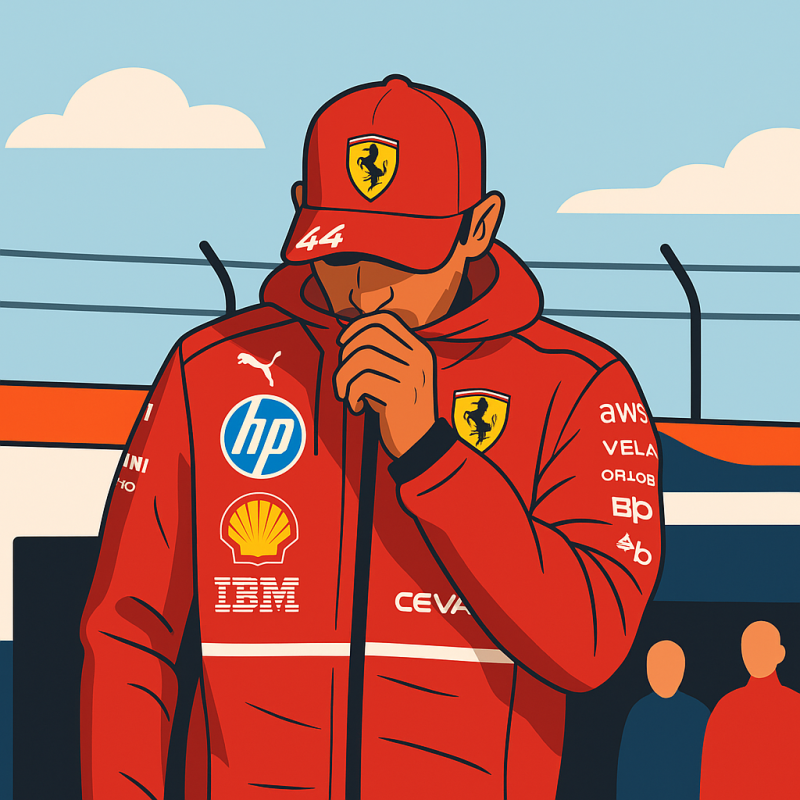Dutch GP Friday: Hamilton wrestles SF-25 through two spins as Ferrari chases eight tenths
Lewis Hamilton came back from the summer shutdown with plenty of intent and a couple of pirouettes to show for it. Ferrari’s new signing looped the SF-25 twice on Friday at Zandvoort, a day that flickered between promise and frustration as the Scuderia tried to dial in a tricky car on a circuit that punishes the slightest lapse.
The first spin arrived in FP1, Hamilton overstepping as he chased a lap in a car he called unpredictable, the ride still not where he wants it. The seven-time champion didn’t dress it up: he’d been pushing, the balance bit him, and around he went.
Practice two was cleaner until it wasn’t. Hunting the edge again, Hamilton nicked the grass and the car snapped—another lazy twirl, more gravel in the tyres, session resumed. If there’s a positive, it’s that he was leaning on the car to find answers rather than tiptoeing around its limits.
Ferrari’s headline pace trailed the class leaders. McLaren led the way on the timesheets, with Aston Martin in tow. For the red cars, FP1 was subdued—Charles Leclerc 14th, Hamilton 15th. The afternoon brought a course correction: Hamilton to sixth, Leclerc eighth, and a bit more stability in the package. Progress, yes. Enough? That’s the knotty part.
Hamilton reckons there’s roughly eight tenths still missing, and he sounded unconvinced they’ll unearth all of it overnight. The team tweaked through lunch, found something, but the gap to the front doesn’t lie at a circuit that magnifies confidence on turn-in and traction on exit. Zandvoort demands trust in the rear and commitment over the cambered crests; Ferrari’s SF-25 occasionally offers neither on demand.
“It wasn’t the worst of days,” he said afterwards, tempering the verdict with a shrug you could hear. Early laps felt decent, then the window shifted on him. Set-up work continues, and so does the search for a more compliant ride. There was a hint of where he thinks time lives—an extra couple of tenths on the table before the FP2 spin and more still in the final corner if the rear sticks through the banking—but bridging eight tenths is a different conversation.
The tone, though, was a step calmer than before the break. The Hungarian Grand Prix ended with Hamilton mired in Q2 and furious with himself, calling his performance “useless” while Leclerc nicked pole. A reset was needed; three weeks later, the edges feel smoothed. He’s still demanding, still blunt about the deficit, just more measured. The real test of composure comes when the clock’s running on Saturday.
For Ferrari, the diagnosis isn’t complicated. The SF-25 needs a friendlier platform over bumps and kerbs, and a rear end that doesn’t go wandering when the front bites. The engineers chased it through Friday, and the car responded in patches—the sixth-fastest time is no disaster at a circuit that’s rarely kind to the unsorted—but there’s daylight to the sweet spot McLaren and Aston appear to have found.
Leclerc’s day tracked a similar arc: anonymous in FP1, sharper in FP2, but still staring up the order at cars that look planted in the loaded corners where lap time hides. The longer runs, while not headline material, suggested Ferrari can hang in the midfield train; the job now is earning a spot ahead of it when it matters.
There are ten races to run on the other side of the shutdown, and Ferrari knows the margins. If qualifying turns into the usual Zandvoort knife-edge—wind, track evolution, traffic—gaps can shrink. If it doesn’t, outright pace will call the tune. Right now, Hamilton sounds like a man who knows exactly where he stands.
He’ll want a clean Saturday: build rhythm in FP3, no surprises through the first banking, keep the tyres alive into the final bend, let the car do what it wants to do on entry and fight it less on exit. Easier typed than done in a car that’s still arguing.
But here’s the thing about Hamilton—he doesn’t hide on Fridays. Two spins aren’t ideal; they’re also evidence he’s leaning into the problem. If Ferrari gives him a platform that’s somewhere near predictable, he’ll wring it. If not, expect elbows-out management and a realistic target that looks a lot like the second or third row.
For now, the bravado is parked. The graft continues. And on a narrow ribbon of track where commitment is currency, Hamilton and Ferrari still owe the bank about eight tenths. That’s the bill they’ll try to pay before qualifying.




